Apidura Backcountry Bags
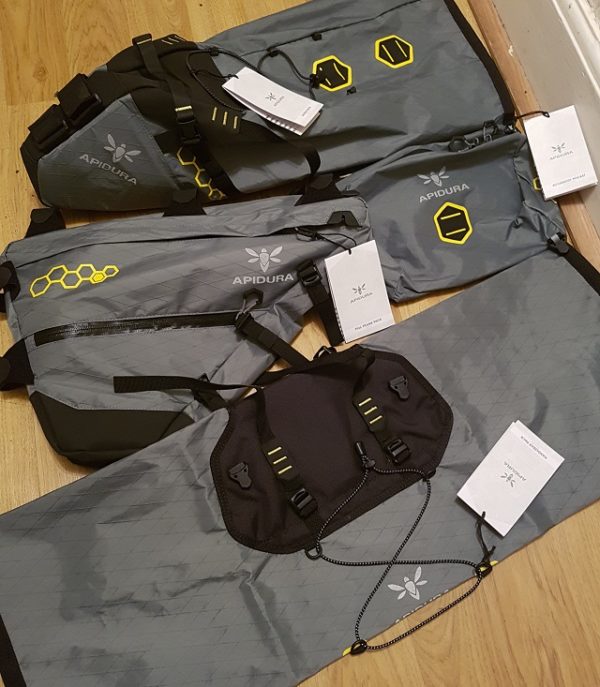
With virtually the full set of Apidura’s Backcountry series of bikepacking bags landing on my doorstep you could say I was a little excited to try them out, and with my Bivvy a Month #2 just around the corner you could say it was great timing!
As stated on the Apidura website (www.apidura.com/shop/) The Backcountry series is “Designed for off-road adventures and recommended for gravel, adventure and mountain bikes. Constructed from an ultralight, hard-wearing laminate and work well in a wide range of weather conditions.”

So within the series I was given to try out was the 17 litre Saddle Pack, the 7.5 litre Full Frame Pack, the 20 litre Handlebar Pack and the 4.5 litre Accessory Pocket. All the Packs are made with a 4 layer laminate ‘Dimension Polyant VX21’ which offers waterproofness, ultra high abrasion & tear resistant, a lightweight material and low stretching of the packs. However, Apidura do recommend using a dry bag to ensure total dryness of the contents inside due to possible leakage through the seams from sustained rain. There is also some different material used on a couple of the packs where there is a risk of high abrasion and puncture (see below) and the logo’s are a reflective material which is used on all the bags.
17 litre Saddle Pack 400 grams
I was using the large 17 litre Saddle Pack but these are also available in 11 and 14 litre versions. The Pack is attached to the seatpost by two large Velcro straps which wrap around the seatpost where you will need 100mm/4 inches of room for the straps on your seatpost. There are two other smaller straps that loop around the seat rails and into the strong looking plastic buckles, these can then be tightened to stop ‘saddle wagging’.  The end of the Saddle Pack is like a typical drybag, simply roll the end around a few times to close the bag except that the roll top clips into the side compression straps rather than into each other. These can also be tightened to give an extremely rigid Saddle Pack with no ‘saddle wagging’. There is also a bungee webbing on the top of the Pack which is handy for that spare layer or for carting your trash from that overnight camp. To round it off there’s two bike light attachment points at the rear of the Pack which are 100mm/4 inch apart so that you can have your light on the back despite maybe not having a full Pack, which is a great little touch.
The end of the Saddle Pack is like a typical drybag, simply roll the end around a few times to close the bag except that the roll top clips into the side compression straps rather than into each other. These can also be tightened to give an extremely rigid Saddle Pack with no ‘saddle wagging’. There is also a bungee webbing on the top of the Pack which is handy for that spare layer or for carting your trash from that overnight camp. To round it off there’s two bike light attachment points at the rear of the Pack which are 100mm/4 inch apart so that you can have your light on the back despite maybe not having a full Pack, which is a great little touch. 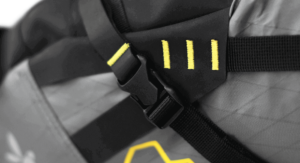 Where the Pack is in contact with the seatpost, the reinforced fabric Hypalon is used to provide added strength. To aid in giving the Pack some structure there is also a sheet of plastic running underneath between the fabric and up the area of contact with the seatpost which also helps spread the area of tightness from the side tensioning straps.
Where the Pack is in contact with the seatpost, the reinforced fabric Hypalon is used to provide added strength. To aid in giving the Pack some structure there is also a sheet of plastic running underneath between the fabric and up the area of contact with the seatpost which also helps spread the area of tightness from the side tensioning straps.
Positives: A great design and looks fantastic. The build quality is superb and looks like it will last many rough miles. A very rigid bag once packed and installed correctly.
Negatives: Can be a bit fiddly attaching through the seat rails (but then again aren’t most seatpacks).
7.5 litre Full Frame Pack 310 grams
I was given the option of the three Full Frame Packs available for the test, the 7.5 litre, 12 litre & 14 litre and after measuring my medium Mukluk the small 7.5 litre fitted snugly. Now when I say small don’t be put off as you can pack an awful lot of kit in a 7.5 litre Pack. Now I’ve never ridden with a full frame bag before so I had it in my mind that my knobbly knees would be rubbing against the bag, they weren’t. 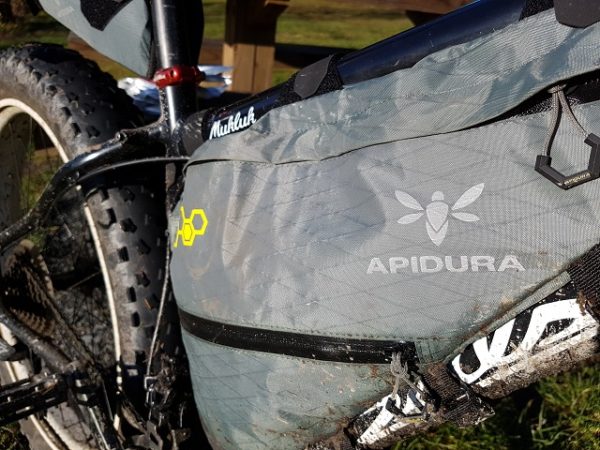 The Full Frame Pack is attached to the frame by three Velcro straps wrapped around the top tube, two around the seat tube and three straps that wrap around the down tube and through plastic buckles to hold it firmly in place. There’s again some tougher Hypalon material around the hard wearing base of the Pack. There’s two accessible compartments which are accessed through the water resistant zippers.
The Full Frame Pack is attached to the frame by three Velcro straps wrapped around the top tube, two around the seat tube and three straps that wrap around the down tube and through plastic buckles to hold it firmly in place. There’s again some tougher Hypalon material around the hard wearing base of the Pack. There’s two accessible compartments which are accessed through the water resistant zippers. 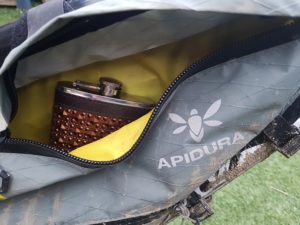 However if you want just one large compartment then you can simply remove the internal divider which is held in place by Velcro. The inside of the Pack is coloured yellow which is great for seeing what’s in there when the light fades. There’s also a small hose port at the front of the Pack for a cable or hydration hose.
However if you want just one large compartment then you can simply remove the internal divider which is held in place by Velcro. The inside of the Pack is coloured yellow which is great for seeing what’s in there when the light fades. There’s also a small hose port at the front of the Pack for a cable or hydration hose.
Positives: Despite being the small size, this Pack can pack some gear. The zip pullers make the Pack easy to access when riding. As with the Saddle Pack a great design and build quality.
Negatives: As with any full frame pack it makes the bikes difficult to hold when lifting over gates etc.
20 litre Handlebar Pack 270 grams
I went for the 20 litre Handlebar Pack over the smaller 9 litre Pack. 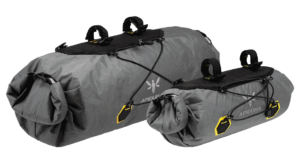 The Pack is attached to the handlebars by two straps that wrap around the handlebar and clip into a plastic attachment. There is another strap that is wrapped around the lower part of the headtube. The pack itself is accessible from both ends using the roll top closer again just like a dry bag. This is a good touch as it gives you flexibility when packing/unpacking and I found it particularly useful.
The Pack is attached to the handlebars by two straps that wrap around the handlebar and clip into a plastic attachment. There is another strap that is wrapped around the lower part of the headtube. The pack itself is accessible from both ends using the roll top closer again just like a dry bag. This is a good touch as it gives you flexibility when packing/unpacking and I found it particularly useful. 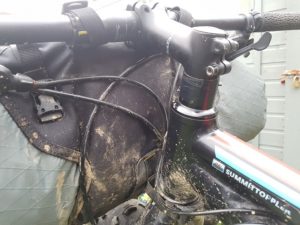 There’s also bungee webbing for attaching kit to. Just like the other bags there’s Hypalon material where the pack is in contact with the frame to help with the lifetime of the pack. One thing I did like about the Handlebar Pack is the fact it had a couple of extra straps to take the additional small Accessory Pocket.
There’s also bungee webbing for attaching kit to. Just like the other bags there’s Hypalon material where the pack is in contact with the frame to help with the lifetime of the pack. One thing I did like about the Handlebar Pack is the fact it had a couple of extra straps to take the additional small Accessory Pocket.
Positives: At 20 litres you can pack a large amount of gear and simply roll up both ends if you don’t fill it. The ability to attach the Accessory Pocket. Great build quality.
Negatives: None, just don’t put heavy items in it as the steering will be awful.
4.5 litre Accessory Pocket 120 grams
This is a handy little pack which attaches to the Handlebar Pack via three straps. A water resistant zipped pocket opens up to the yellow interior of the pack. 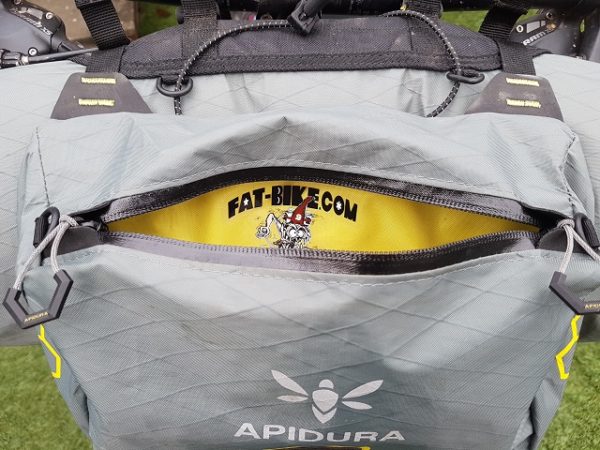 There’s a mesh pocket in there for keeping thing in order which I found useful as it stopped everything getting mixed up inside. There’s even a light attachment on the external front of the bag too. A great little addition.
There’s a mesh pocket in there for keeping thing in order which I found useful as it stopped everything getting mixed up inside. There’s even a light attachment on the external front of the bag too. A great little addition.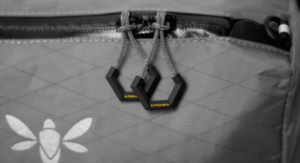
Positives: a useful piece of kit for keeping items within easy reach when riding.
Negatives: None.
All in all, this is a fantastic piece of bikepacking luggage which has vastly improved my overnight trips over the last couple of months. There’s a lot I like about the bags and to be honest I haven’t found that much to dislike. I’ll see how they perform over the year of #BAMfatbike2018 as I get a further understanding of how these bags perform. I’ll give it 12 months and report back with a year with the Apidura bags.
So I give the Backcountry range of bikepacking bags from Apidura a fiery 4.5 Welsh Dragons out of 5.


Everybody knows you have to use the Vladeran lion as a unit of measurement not a dragon. Great review, thanks!!